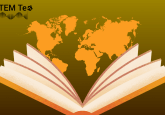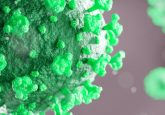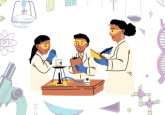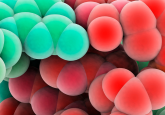Editor’s Picks | March 2023
In this episode of Editor’s Picks, hear about how researchers have taken biotechnology to a whole new level, moving individual cells with sound waves, and geckos are more socially intelligent than we thought….
Articles featured in this month’s episode include:
- Blurring the line between human and machine: growing electrodes in tissue
- Introducing organoid intelligence: human brain cells that power biocomputers
- The smelly smell of self-recognition?
- Get in formation: ultrasound waves direct cells into place
- Tailoring LC–MS platforms for specific applications in drug design and detection
- Why a ‘protein’ isn’t: acknowledging proteome complexity
- International Women’s Day 2023
Let us know which articles you enjoyed this month by tweeting us @MyBioTechniques using #BTNEditorsPicks
[00:31 – 01:04] ‘Biotechnology’ has been level upped as researchers have developed a gel that facilitates electrode growth in zebrafish and medicinal leech tissue. This viscous gel becomes electrically conductive when injected into a tissue and relies on molecules in the body to trigger its conductivity. The researchers utilized this gel to grow electrodes in the heart, brain and tailfins of zebrafish and in the nervous system of leeches. More research will be needed before this is translated into humans, but, for now, this study marks a step up in bioelectronic development.
[01:04 – 01:36] I know you’ve heard of artificial intelligence, but what about organoid intelligence? Researchers are in the process of building the first biocomputer powered by organoids, which could have a greater ability to learn than artificial intelligence while also requiring less energy. This technology could be used to study neurological conditions, such as investigating how memory formation differs in organoids derived from healthy people and those from Alzheimer’s patients. However, advancing the organoids’ complexity could lead to sentience, which raises some ethical questions.
[01:36 – 02:18] Academics have demonstrated that geckos can differentiate their own smell from the skin and feces of other geckos, a discovery which casts new light on the complexity of reptile social connections. Self-recognition is usually tested with a mirror test to determine if an animal can comprehend that it is looking at its own reflection in the mirror. However, this test only paints the most anthropomorphic picture of self-awareness. Other species are less reliant on sight and instead utilize their powerful sense of hearing or smell to map their environments. This study indicates that these reptiles are more social and intelligent that previously thought. Further study will be needed to be confident about geckos’ ability for self–other recognition.
[02:18 – 03:07] How do you precisely move something you can’t see with your own eyes, let alone touch? Optical tweezers offer a solution to manipulate individual cells; however, these are not intended for moving large numbers of cells simultaneously. Now, researchers have developed an alternative tool using ultrasound to push and pull cells selectively. Sound waves create different pressure zones that attract and repel objects depending on their physical properties. The researchers genetically engineered cells to contain an air-filled protein capsule. These cells are attracted to areas of high pressure while normal cells are pushed away. They used this technique to manipulate cells into several different configurations including an R, created within a gel that could hold the cells in position after it solidified.
[03:07 – 03:44] Liquid chromatography coupled with mass spectrometry is a popular analytical tool as liquid chromatography separates a sample into its constituents, which can then be identified with mass spectrometry. In February, I wrote about two recent papers that tailor this technique for specific applications. One of the papers automates the analytical tool to monitor antidepressants in patients, which requires a relatively small sample size. The other paper reports a liquid chromatography mass spectrometry-based platform that quantifies the structure of artificial messenger RNA, which could be applied for quality control in mRNA production.
[03:44 – 04:04] Earlier this year, we welcomed Jens Coorssen to our panel of LEARN mentors, who work with us to provide resources for early career researchers. Jens wrote an opinion piece about proteome complexity and discusses how could considering the full spectrum of proteoforms revolutionize the translational potential of proteomics.
[04:04 – 04:35] To celebrate International Women’s Day, we interviewed women from across the STEM community and asked them about what advice they would give to their younger self, which we collated into a handy infographic filled with their useful resources. It was so much fun chatting with all these women in STEM, hearing about their career stories and their research. We spoke to researchers who study small proteins, develop computational brain models to screen novel biomedicines and who work at the interface of academia and industry. I’d recommend you grab a cup of tea and get cozy to read these wonderful interviews!
[04:35 – 05:06] Those are some of the articles from BioTechniques that I enjoyed reading or writing over the past month, but there are plenty more on our website. Let us know what your favourite articles were this month by tweeting us at My BioTechniques and use the hashtag BTN Editors Picks. If you’d like to find out more about any of these articles check out the show notes of this episode.Thank you for listening.
Bye!





